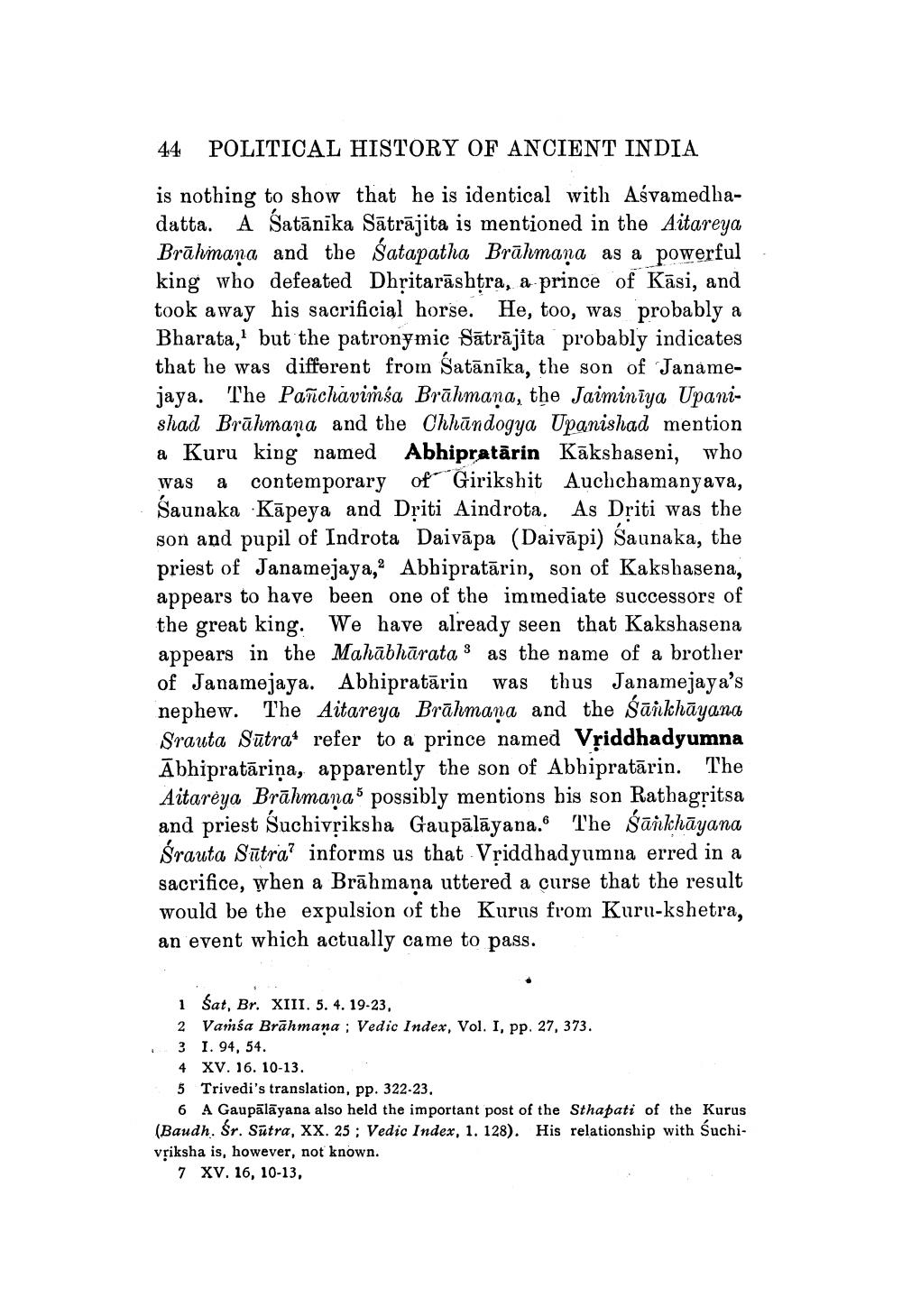________________
44 POLITICAL HISTORY OF ANCIENT INDIA
is nothing to show that he is identical with Aśvamedhadatta. A Satānika Sātrājita is mentioned in the Aitareya Brāhmana and the Satapatha Brāhmana as a powerful king who defeated Dhritarāshtra, a prince of Kāsi, and took away his sacrificial horse. He, too, was probably a Bharata,' but the patronymic Sātrājita probably indicates that he was different from Satānika, the son of Janamejaya. The Panchavimśa Brāhmaṇa, the Jaiminiya Upanishad Brāhmana and the Chhāndogya Upanishad mention a Kuru king named Abhipratārin Kākshaseni, who was a contemporary of Girikshit Auchchamanyava, Saunaka Kāpeya and Driti Aindrota. As Dșiti was the son and pupil of Indrota Daivāpa (Daivāpi) Saunaka, the priest of Janamejaya, Abhipratārin, son of Kakshasena, appears to have been one of the immediate successors of the great king. We have already seen that Kakshasena appears in the Mahābhārata s as the name of a brother of Janamejaya. Abhipratārin was thus Janamejaya's nephew. The Aitareya Brāhmana and the sānkhāyana Srauta Sutrat refer to a prince named Vriddhadyumna Ābhipratāriņa, apparently the son of Abhipratārin. The Aitarèya Brāhmana' possibly mentions bis son Rathagritsa and priest Suchivșiksha Gaupālāyana. The Sankhāyana Śrauta Satra? informs us that Vriddhadyumna erred in a sacrifice, when a Brāhmaṇa uttered a curse that the result would be the expulsion of the Kurus from Kurukshetra. an event which actually came to pass.
1 sat, Br. XIII. 5. 4. 19-23, 2 Vamsa Brāhmana ; Vedic Index, Vol. I, pp. 27, 373. 3 I. 94, 54. 4 XV. 16. 10-13. 5 Trivedi's translation, pp. 322-23.
6 A Gaupālāyana also held the important post of the Sthapati of the Kurus (Baudh. Śr. Sutra, XX. 25 ; Vedic Index, 1. 128). His relationship with Suchivriksha is, however, not known.
7 XV. 16, 10-13,




